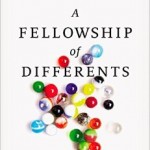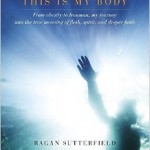 [ This post is part of the Patheos Book Club discussion
[ This post is part of the Patheos Book Club discussion
of Christine Valters Paintner’s book EYES OF THE HEART ]
[ Buy the Book … ]
One of the key facets of what John and I are calling Slow Church is the idea that creation operates as a gift economy: i.e., that all life is created and sustained by God. Our call as humans is to live gratefully within the broader economy of creation. Part of a life of gratitude is the living of a receptive life, in which we are wondrously attentive to the abundant gifts of God that surround us at any given moment.
The challenge to living such a life, however, is that we all too often are formed into the pattern of industrial Western culture that is moving ever faster, and in which attentiveness is rapidly becoming a lost art, as Maggie Jackson has chronicled in her recent and superb book Distracted. However, humanity is not lost, we are still capable of reversing this trend and re-training our attention. There are many arts, crafts and even hobbies (e.g., birdwatching, as Phil Kenneson has pointedly argued in a recent talk on Slow Church) that can train us to be more attentive. It is in this context, that I found Christine Valters Paintner’s new book, Eyes of the Heart: Photography as a Christian Contemplative Practice. I was familiar with Paintner’s work, and had even reviewed her recent book on Lectio Divina.
I was therefore not surprised that Eyes of the Heart is a profoundly helpful resource in helping us to recover the lost art of attention, and will certainly be of interest to readers who are interested in photography (or those who might eventually become so; although with the smartphone explosion over the last few years, practically everyone has easy access to a decent camera, and is a photographer at some level). The first two chapters of the book – “Seeing With Eyes of the Heart” and “Practices and Tools to Cultivate Vision” – take a focus broader than photography and could easily be read by anyone whether she was a photographer or not. There is plenty to commend in these early chapters, including a section on Thomas Merton as one of the earliest thinkers to consider photography as a contemplative practice. However, the most captivating section here was the first one of Chapter Two: “’Receiving’ Rather Than ‘Taking’ Photos.” This shift of language fits well with the sort of gift economy that I named at the outset of this review. Paintner says in this section:
“When we are receptive we let go of our agendas and expectations. … [Instead] of ‘holding back,’ and merely observing life or falling asleep to it, we stay awake and alert, participating fully in its messiness and we keep our eyes open for the holy presence in its midst. Photographing in this way can become an act of revelation. One of the gifts of the art, in general, and photography in particular is that the artist can offer others this vision of the graced ordinary moment” (31).
The remaining six chapters delve deeply into the particulars of photographic practice: from light and shadow, to composition, to color, to reflections, to self-portraits, to a broader concluding chapter on “Seeing the Holy Everywhere.” Throughout, Paintner keenly guides the reader into deeper reflection on the meaning of photography within the broader scope of the Christian contemplative tradition. For those who would read it, and begin to experiment with putting Paintner’s compelling thoughts into practice, will certainly find themselves slowing down and moving against the flow of industrial Western culture.
Eyes of the Heart is deep and insightful book, one can only hope that it will inspire a related series of books that explore a variety of arts, crafts and hobbies as contemplative practices!












